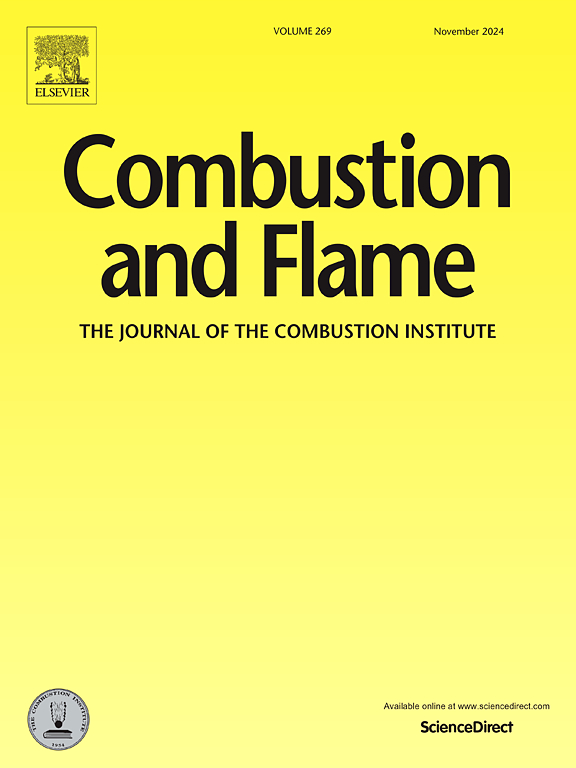Study on the in-flame electron transport behaviors towards early-stage engine knocking detection
IF 6.2
2区 工程技术
Q2 ENERGY & FUELS
引用次数: 0
Abstract
In future high-efficiency engines that implement high compression ratios, the occurrence of knock/super knock phenomena, primarily triggered by the end gas auto-ignition (EGAI), will pose a significant challenge. To address this issue, ion sensing technology has emerged as a highly promising approach for real-time detection of knock events. However, the reliability of ion sensing based EGAI detection is still poor due to the electron ambipolar diffusion process. When EGAI occurs at the far end of the engine combustion chamber, the electrons produced in the EGAI zone are bound to positive ions due to electrostatic force. In such case, the electrons can hardly diffuse out of the zone and be collected by the anode of spark plugs (which functioned as the ion probes in production engines), consequently leading to the fault of ion sensing method. To overcome this challenge, the behaviors of electron transport under various external electric field configurations are analyzed by simulating the end gas ignition process in a constant volume combustion chamber (CVCC). The findings demonstrate that an external electric field can surmount the electrostatic force acting on electrons and positive ions. Specifically, when the voltage applied from the DC power source in the ion sensing circuit exceeds 10 kV, numerical analysis suggests a transition from electron ambipolar diffusion to unipolar diffusion. Consequently, electrons can successfully diffuse out of the EGAI zone in the CVCC. This enables the collection of ion current signals by an ion probe positioned outside of that zone. Thus, the potential of early-stage engine knocking detection based on ion sensing is highlighted, particularly since high voltages can be configured by incorporating engine ignition modules into the ion sensing systems.
面向发动机早期爆震检测的火焰电子传递行为研究
在未来实现高压缩比的高效发动机中,主要由尾气自动点火(EGAI)引发的爆震/超级爆震现象将构成重大挑战。为了解决这个问题,离子传感技术已经成为一种非常有前途的方法,用于实时检测爆震事件。然而,由于电子双极性扩散过程的存在,基于离子传感的EGAI检测的可靠性仍然较差。当EGAI发生在发动机燃烧室的远端时,EGAI区产生的电子由于静电力而与正离子结合。在这种情况下,电子很难扩散出区域,并被火花塞的阳极收集(火花塞在生产发动机中起着离子探测器的作用),从而导致离子传感方法的故障。为了克服这一挑战,通过模拟定容燃烧室(CVCC)末气点火过程,分析了不同外电场构型下的电子输运行为。研究结果表明,外加电场可以克服作用在电子和正离子上的静电力。具体来说,当直流电源在离子传感电路中施加的电压超过10 kV时,数值分析表明电子从双极扩散向单极扩散过渡。因此,电子可以成功地扩散出CVCC中的EGAI区。这使得放置在该区域外的离子探针能够收集离子电流信号。因此,基于离子传感的早期发动机爆震检测的潜力得到了强调,特别是因为可以通过将发动机点火模块集成到离子传感系统中来配置高压。
本文章由计算机程序翻译,如有差异,请以英文原文为准。
求助全文
约1分钟内获得全文
求助全文
来源期刊

Combustion and Flame
工程技术-工程:化工
CiteScore
9.50
自引率
20.50%
发文量
631
审稿时长
3.8 months
期刊介绍:
The mission of the journal is to publish high quality work from experimental, theoretical, and computational investigations on the fundamentals of combustion phenomena and closely allied matters. While submissions in all pertinent areas are welcomed, past and recent focus of the journal has been on:
Development and validation of reaction kinetics, reduction of reaction mechanisms and modeling of combustion systems, including:
Conventional, alternative and surrogate fuels;
Pollutants;
Particulate and aerosol formation and abatement;
Heterogeneous processes.
Experimental, theoretical, and computational studies of laminar and turbulent combustion phenomena, including:
Premixed and non-premixed flames;
Ignition and extinction phenomena;
Flame propagation;
Flame structure;
Instabilities and swirl;
Flame spread;
Multi-phase reactants.
Advances in diagnostic and computational methods in combustion, including:
Measurement and simulation of scalar and vector properties;
Novel techniques;
State-of-the art applications.
Fundamental investigations of combustion technologies and systems, including:
Internal combustion engines;
Gas turbines;
Small- and large-scale stationary combustion and power generation;
Catalytic combustion;
Combustion synthesis;
Combustion under extreme conditions;
New concepts.
 求助内容:
求助内容: 应助结果提醒方式:
应助结果提醒方式:


